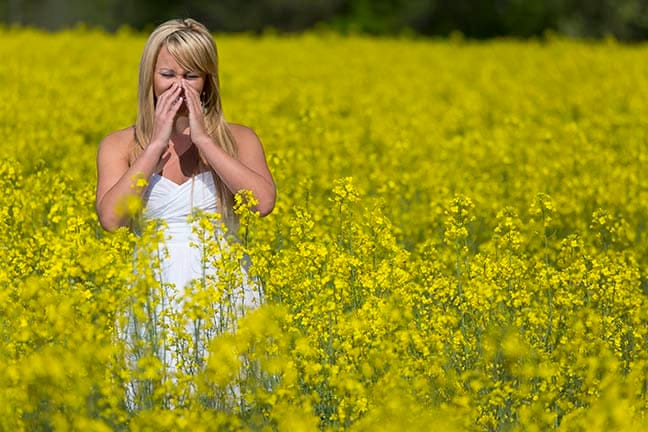
How to manage allergies during allergy season?
Spring. Summer. Fall. These beautiful seasons of the year when colors are bright and the earth is fresh can be difficult times for those with seasonal allergies. That crisp, clean air – both warm and cool – can be filled with allergens. As part of the natural reproductive cycle of grasses, trees and weeds, great quantities of pollen are released into the air. For those who have allergic asthma or seasonal allergies, these seasons create watering eyes and running noses. Awareness can be the first step to avoidance.
According to the American Academy of Allergy, Asthma and Immunology (AAAAI), more than 40,000,000 Americans are affected by seasonal allergies. Seasonal allergies in early spring often result from pollens released by trees. Seasonal allergies in late spring and early summer often come from pollinating grasses. Having grass allergies is a bane to many golfers, hikers and those who love the outdoors. Seasonal allergies in fall are often caused by pollens released by weeds.
How to deal with seasonal allergies?
Many physicians and health practices advise those with seasonal allergies to remain indoors when pollen release occurs. The trick is knowing that different plants release pollens at different times. For example, on warm and sunny days, many grasses and weeds release pollen beginning in the early morning. However, on a damp morning with high dew or after a rainstorm, pollens are held tight to the surface of the grasses and leaves by the moisture. When that moisture evaporates, then the pollen is released, which could be mid-morning or even in the early afternoon. Still other species of grass release their pollen later in the afternoon. The bottom line is: if you have allergies to several different types of pollen, you may be susceptible to it throughout a day without a clear time to get outdoors.
One type of pollen can affect allergy sufferers in non-prime time. Remember how different vegetation releases pollen at different times of the day? What about night time? Even though the pollen count from local plants is low at night, air carrying pollen cools and falls towards the ground. Wind-blown pollen can travel great distances; ragweed has been detected at sea about 400 miles from shore.
Awareness is Key. If you know which pollen triggers your symptoms, and where it appears in your community, you can plan your day accordingly. Know what time of year that you experience problems. Tree pollen is usually released in the spring, grass pollen in late spring and early summer, and weed pollens in late summer into autumn. An allergy doctor can organize tests to further narrow down the culprit. Having identified the offending pollen try to remain indoors when it is being released.
Keep track of the pollen count in your area. The weather section in many newspapers publish the anticipated pollen count. The pollen count is usually taken the day before it is broadcast. As mentioned above, rain or cool weather can reduce pollen count; hot weather or short thunderstorms can increase it. Plants tend to retain their pollen on cloudy days, so expect a higher than average release on the next sunny day. Two other good sources are www.weather.com and the National Allergy Bureau (www.aaaai.org)
What are Some Alternatives to Seasonal Allergies?
Pollen is pervasive. No one wants to be a prisoner when the weather is nice. Avoiding exposure, finding relief and using appropriate protection offer three alternatives to spring allergies.
Some steps to minimize exposure include:
- Spend time outdoors when the pollen count is low. One of the best times includes mornings of cooler, cloudy days.
- Keep windows and doors shut during high pollen counts, especially during pollen release and in the evening when airborne pollen falls to the ground.
- Avoid pollen-bearing plants. Grow insect-pollinated plants in the garden rather than air-pollinated plants. Hire someone to mow the lawn if you have grass allergies.
- Use a tumble-dryer to dry your linens and laundry. If you hang these outside, pollen can cling to the fabric. When you wear clothes or sleep on sheets that have pollen, you’re asking for trouble.
- Wash up. If you are outside for any length of time when the pollen count is high, make sure to take a shower and wash your hair when you get inside. Long or thick hair can act like a magnet to trap pollen. Rinse your hair thoroughly to wash out any residual pollen.
- Separate your outdoor clothes from your bedroom. Have a set of clothes in your wardrobe that you wear only indoors. The fabric in your clothes can trap pollen and you can drag it inside.
Categories: Health & Fitness